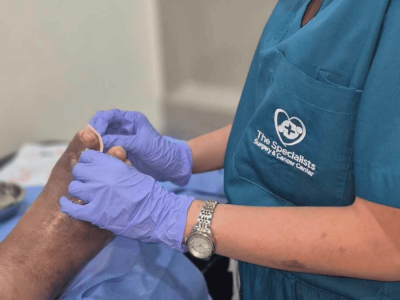Understanding Hip Resurfacing
Hip resurfacing is an advanced orthopedic procedure designed to treat severe hip pain and mobility issues caused by arthritis, hip dysplasia, or joint damage. Unlike a total hip replacement, where the entire hip joint is removed and replaced with an artificial implant, hip resurfacing preserves much of the natural bone. The damaged surface of the hip joint is trimmed and capped with a smooth metal covering, allowing for improved mobility and strength. This procedure is particularly appealing to younger and more active patients because it allows for greater stability and may reduce the risk of dislocation compared to traditional hip replacements. Many individuals choose hip resurfacing abroad because of the procedure’s affordability, availability of skilled surgeons, and modern medical facilities. Understanding the details of the procedure can help patients feel more confident about exploring international surgery options.
Why Patients Consider Hip Resurfacing Abroad
One of the biggest motivators for seeking hip resurfacing abroad is the cost difference compared to the United States or Western Europe. In many international destinations, patients can save between 40% and 70% on total expenses, even after factoring in travel and accommodation. Another advantage is the access to surgeons who specialize in hip resurfacing, often performing hundreds of these procedures each year. For patients in countries with long waiting lists, traveling abroad offers the benefit of faster scheduling and immediate treatment. Some destinations also provide wellness-oriented recovery environments, such as resorts or rehabilitation centers, where patients can rest and heal in comfort. Additionally, medical tourism packages are often designed to cover nearly every aspect of the journey, from pre-surgical consultations to aftercare support. Patients see international healthcare not only as a financial decision but also as an opportunity for world-class treatment in an accessible setting.
Popular Destinations for Hip Resurfacing Abroad
Several countries have become leading destinations for patients interested in hip resurfacing abroad due to their reputation for skilled surgeons, modern medical facilities, and affordable healthcare. India is often at the top of the list, with internationally trained orthopedic surgeons who specialize in this field. Thailand is another popular choice, offering hospitals with state-of-the-art technology and English-speaking staff who cater to international patients. Turkey has rapidly grown as a medical tourism hub, combining affordability with advanced orthopedic centers. Mexico is a convenient option for North American patients due to proximity and lower costs without compromising on quality. Eastern European countries such as the Czech Republic, Poland, and Romania also provide affordable hip resurfacing options with reputable hospitals and board-certified surgeons. Each of these destinations offers unique advantages, and choosing the right one often depends on a patient’s priorities, whether that be cost savings, travel convenience, or access to specific surgeons.
Evaluating International Hospitals and Surgeons
Selecting the right hospital and surgeon is perhaps the most critical step when planning hip resurfacing abroad. Patients should start by checking for international accreditations such as JCI (Joint Commission International) or ISO certification, which ensure adherence to high standards of healthcare. Equally important is evaluating the surgeon’s experience; patients should look for doctors who have performed a significant number of hip resurfacing procedures with documented outcomes. Many hospitals abroad provide detailed surgeon profiles, including training, certifications, and years of experience. Infrastructure is also a key factor, as advanced orthopedic technology and modern rehabilitation facilities can make a significant difference in recovery. Patient reviews and transparent success rates can also help build confidence in a hospital’s credibility. Choosing a surgeon with strong communication skills and a dedicated support team ensures that patients receive personalized care. The more research patients do beforehand, the better equipped they are to make safe and informed choices.
The Cost of Hip Resurfacing Abroad
One of the primary reasons patients seek hip resurfacing abroad is the affordability of the procedure compared to Western countries. In the United States, hip resurfacing can cost anywhere from $35,000 to $50,000, whereas in countries like India, Thailand, or Mexico, the cost is typically between $7,000 and $15,000. These savings often include not just the surgery itself but also hospital stays, pre-operative consultations, and rehabilitation. Some medical tourism providers bundle complete packages that cover accommodations, airport transfers, and even a companion’s lodging, making the process more convenient. Patients should, however, remain mindful of hidden costs such as post-surgery medications, extended rehabilitation stays, and follow-up consultations. When comparing prices, it’s important to evaluate the overall value, not just the lowest figure. Affordability paired with quality healthcare makes hip resurfacing abroad an attractive option for patients who otherwise might delay or avoid the surgery due to financial concerns.
Preparing for Surgery Overseas
Proper preparation is key to ensuring a smooth experience when undergoing hip resurfacing abroad. Patients should start by gathering their complete medical records, including imaging such as X-rays or MRIs, which will be essential for pre-surgical evaluation. Many international hospitals conduct virtual consultations to assess candidacy before patients commit to traveling. It’s also important to clarify insurance coverage and understand whether any part of the surgery or aftercare will be reimbursed. Travel logistics must be carefully planned, especially since mobility may be limited after surgery. Patients should consider traveling with a companion who can provide support during recovery. Packing essential items such as comfortable clothing, necessary medications, and assistive devices can make the recovery process more manageable. Preparing both physically and mentally helps patients feel confident and reduces stress leading up to the procedure.
Risks and Considerations of Getting Hip Resurfacing Abroad
While hip resurfacing abroad offers many benefits, patients must be aware of potential risks. Complications such as infection, blood clots, or implant issues can occur, though these risks are present regardless of where surgery is performed. Language and cultural barriers may present challenges in communication, though many hospitals catering to international patients employ multilingual staff. Post-operative care is another consideration, as patients must ensure they have access to proper rehabilitation once they return home. Selecting reputable hospitals with experienced surgeons greatly minimizes these risks. Patients should also prepare for the possibility of extended recovery times, which may require staying abroad longer than expected. Understanding both the benefits and challenges helps individuals make a balanced and informed decision. By carefully weighing these considerations, patients can reduce uncertainty and feel more secure in their choice.
Patient Experience and Recovery Journey
The recovery process after hip resurfacing abroad typically begins with a hospital stay of a few days, followed by physical therapy sessions. Many hospitals offer integrated rehabilitation services, ensuring that patients begin walking and regaining strength as soon as possible. Recovery timelines vary, but most patients can expect to return to normal activities within three to six months. International facilities often provide additional support services such as dedicated patient coordinators, wellness centers, and post-operative follow-ups. Rehabilitation abroad can sometimes be more comprehensive, as many hospitals tailor programs to medical tourists who may not have access to ongoing care once they return home. The environment in many medical tourism destinations is also designed to promote healing, with facilities that resemble hotels or resorts rather than traditional hospitals. Continuing recovery at home with a local physical therapist ensures long-term success. Patients who prepare for both phases of recovery—abroad and at home—tend to have smoother healing experiences.
Is Hip Resurfacing Abroad Right for You?
Deciding whether to pursue hip resurfacing abroad depends on individual needs, health status, and comfort level with international medical travel. Ideal candidates are typically younger, active individuals who want to maintain bone strength while addressing hip damage. Those with financial limitations often find international surgery to be a viable solution without sacrificing quality of care. Patients must also assess their willingness to travel, manage logistics, and commit to post-operative rehabilitation. Asking the right questions, such as the surgeon’s experience, hospital accreditation, and aftercare plans, can help clarify the decision. Some patients prioritize affordability, while others value access to renowned surgeons in specific destinations. Ultimately, the choice requires balancing personal health goals, budget, and trust in the healthcare system abroad. Taking time to evaluate all aspects ensures that patients make the best possible decision for their future mobility and quality of life.
Frequently Asked Questions (FAQ)
How safe is hip resurfacing abroad compared to getting it done at home?
Hip resurfacing abroad can be just as safe as domestic procedures, provided patients choose accredited hospitals and experienced surgeons. Many international hospitals maintain standards that match or exceed those in Western countries.
What is the average recovery time after hip resurfacing surgery?
Recovery usually takes three to six months, with the first few weeks focused on regaining mobility through physical therapy. Each patient’s timeline varies depending on age, health, and adherence to rehabilitation.
Will my insurance cover hip resurfacing abroad?
Some insurance providers offer partial or full coverage for international medical procedures, but this varies by plan. Patients should check with their insurer in advance to understand eligibility and reimbursement options.
How do I find the best surgeon for hip resurfacing overseas?
Researching hospital accreditations, surgeon credentials, and patient reviews is essential. Many hospitals provide detailed surgeon profiles and arrange online consultations before scheduling surgery.
Can I travel with a companion during my medical trip?
Yes, most medical tourism packages allow patients to bring companions, and hospitals often include accommodations for them. Having a companion provides emotional support and practical assistance during recovery.
What happens if I experience complications after I return home?
Patients should arrange for local follow-up care before traveling abroad. Some hospitals also provide telehealth consultations to assist with any post-operative concerns once the patient has returned home.
How long should I plan to stay abroad for the full procedure and recovery?
Most patients stay between two to four weeks, depending on the hospital’s recovery recommendations. This allows time for surgery, initial rehabilitation, and clearance to travel safely back home.











